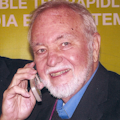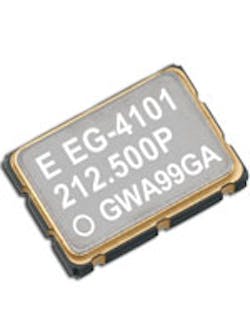SAW Oscillator Competes For Clock Duties Against Entrenched Crystal Oscillators
Crystal oscillators dominate the clock circuit space because of their superior precision, stability, and low cost. But Epson Toyocom offers some attractive alternatives. Its EG-4101/4121A surface-acoustic wave (SAW) oscillator has the stability and performance to challenge crystal oscillators in wireless basestations and local-area network (LAN) and storage-area network (SAN) applications (see the figure).
The unique, patented EG-4101/4121A features temperature frequency stability and phase noise performance that fit a variety of communications applications. It operates at a fundamental frequency in the 100- to 700-MHz range. Meanwhile, crystal oscillators operate at a lower frequency and use a phase-locked loop (PLL) multiplier to get the final output frequency, which usually worsens the jitter and phase noise performance. Other key features include:
- Frequency tolerance of ±50 x 10–6
- Wide operating temperature range of –40°C to 85°C
- Low phase noise and jitter: 0.2 ps maximum (at 622.08 MHz, 12 kHz to 20 MHz)
- Support for multiple output loads, including LV-PECL, LVDS, and HCSL
- Operation from 2.5 or 3.3 V; the current draw depends on the output load conditions
Next time you’re looking for a clock in a communications application, you may want to explore this SAW option.
Epson Toyocom Corp.
www.epsontoyocom.co.jp/english/
About the Author

Lou Frenzel
Technical Contributing Editor
Lou Frenzel is a Contributing Technology Editor for Electronic Design Magazine where he writes articles and the blog Communique and other online material on the wireless, networking, and communications sectors. Lou interviews executives and engineers, attends conferences, and researches multiple areas. Lou has been writing in some capacity for ED since 2000.
Lou has 25+ years experience in the electronics industry as an engineer and manager. He has held VP level positions with Heathkit, McGraw Hill, and has 9 years of college teaching experience. Lou holds a bachelor’s degree from the University of Houston and a master’s degree from the University of Maryland. He is author of 28 books on computer and electronic subjects and lives in Bulverde, TX with his wife Joan. His website is www.loufrenzel.com.
